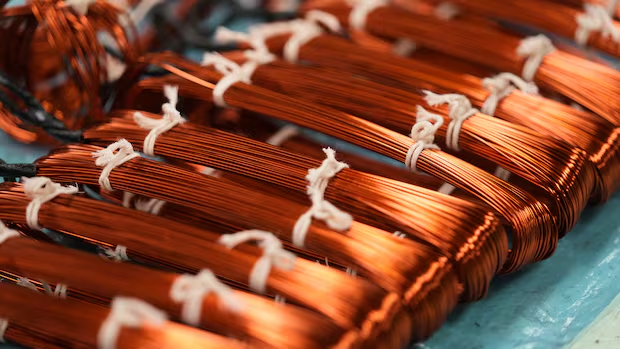
Canada is officially designating certain critical minerals as a national security priority under the Defence Production Act, a move that would allow the federal government to support the mining industry by guaranteeing it a buyer and a minimum price.
The move was announced at a G7 energy and environment meeting in Toronto on Friday, where countries discussed countering China’s overwhelming dominance of critical mineral production. Those minerals are essential for modern technologies like electric vehicles and clean energy, and Western nations have been growing increasingly anxious over China’s control of their supply chain.
“We need to create the certainty of demand and the certainty pricing so that those mines and processing facilities can get built,“ said Canada’s Energy Minister Tim Hodgson at a news conference at the G7 meeting on Friday.
Hodgson announced that G7 countries were investing $6.4 billion into 26 critical mineral projects across Canada to support the domestic mining industry and build alternatives to Chinese minerals.
Projects getting funding include Nouveau Monde Graphite’s Matawinie mine near Montreal, Rio Tinto’s Scandium production plant (rare earths used in aerospace and defence) in Sorel-Tracy, Que., and Torngat Metals’ Strange Lake project in Quebec, which involves rare earths. The price floor being set for buying these minerals is confidential due to security and commercial reasons, according to the government.
Energy Minister Tim Hodgson is seen at the G7 Energy and Environment Ministers’ meeting in Toronto on Thursday. (Laura Proctor/The Canadian Press)
Trying to counter China’s dominance
Without state intervention, Canadian companies trying to get off the ground would have their prices undercut by Chinese suppliers, industry experts say.
“Some commodities where China dominates, you can’t get a project off the ground. We have projects across the country that can’t get financing because they’re seen to be too vulnerable,” said Pierre Gratton, president of the Mining Association of Canada.
“China can swoop in tomorrow, lower prices, and the project is dead on arrival.”
Hodgson has been holding talks with his G7 counterparts — the group of industrialized economies that includes the U.S., U.K., Germany, Japan, France, Italy and Canada — for months over co-operating on a new critical minerals production alliance — or a “buyers club,” as he calls it.
The idea is for G7 countries to invest in critical minerals projects within the bloc — agreements that will help set price floors or long-term buying agreements, helping build up critical minerals production in Western countries.
It taps into growing anxiety over China’s global dominance of the critical minerals supply chain. China is the leading refiner of 19 out 20 important strategic minerals, with an average market share of 70 per cent, according to the International Energy Agency.
In the past few years, China’s share of the market has continued to grow at the same time as the need for these critical minerals becomes more important — in a wide range of growing technologies, like battery-electric vehicles and solar panels.
Visitors are seen at an expo on mineral supply chains in Beijing in 2024. China controls most of the supply chain of several key critical minerals and its share has been growing. (Ng Han Guan/The Associated Press)
“Canada is blessed with a lot of these critical minerals, and it represents a multi-billion dollar opportunity for Canada to responsibly develop these minerals,” said Eyab Al-Aini, senior research associate at the Canadian Climate Institute.
But, he said, Canada’s resources are untapped. His team has analyzed six priority minerals — copper, lithium, graphite, cobalt, nickel and rare earths — all of which, they found, could grow in demand dramatically. Canada’s domestic demand for critical minerals alone could be $16 billion per year by 2040, driven largely by a local battery production industry, according to the analysis.
“In 2025, two-thirds of all global energy investments is going to clean technologies, and a lot of those technologies that the world will need depend on critical minerals.” Al-Aini said, referring to investments in clean technologies like solar and wind outpacing fossil fuels.





